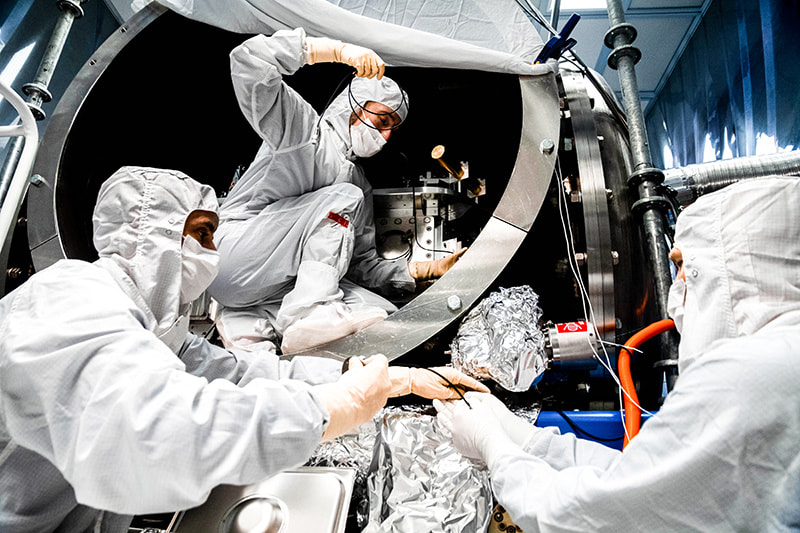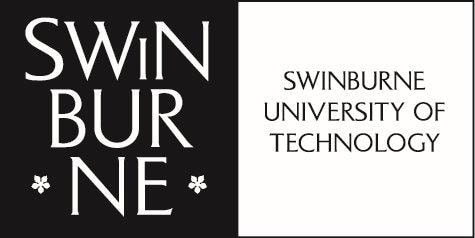|
Researchers from the ARC Centre of Excellence for Gravitational Wave Discovery (OzGrav), as part of an international team of scientists, are set to resume their hunt for gravitational waves - ripples in space and time - on April 1. They will be taking full advantage of a series of major upgrades to the LIGO detectors. LIGO - which consists of twin detectors located in Washington and Louisiana, USA - is now about 40% more sensitive, which means that it can survey an even larger volume of space for powerful, wave-making events, such as the collisions of black holes. Joining the search will be Virgo, the gravitational-wave detector located at the European Gravitational Observatory (EGO) in Italy, which has almost doubled its sensitivity since its last run and is also starting up April 1. One of the key upgrades to the LIGO detectors employs a technique called "squeezing” to reduce levels of quantum noise that can mask faint gravitational-wave signals. The technique was developed at the Australian National University, and has been routinely used since 2010 at the GEO600 detector. Says OzGrav’s Professor David McClelland who leads this effort at ANU, "manipulating the quantum world to enhance the sensitivity of the world’s biggest laser interferometers will enable the deepest searches yet for new gravitational wave sources". OzGrav researchers have also spent time in the US installing the instrumentation, including PhD student Nutsinee Kijbunchoo who says “with every improvement in our squeezing technology, we can push further out into Universe. Seeing the range jump to more than 100 megaparsecs for the first time after injecting squeezing was one of the most exciting moments of my PhD!” Image: LIGO team members (left-to-right: Fabrice Matichard, Sheila Dwyer, Hugh Radkins) install in-vacuum equipment as part of the squeezed-light upgrade. Credit: Nutsinee Kijbunchoo/ANU Over at University of Adelaide, OzGrav postdoctoral researcher Dan Brown has also been working on developing new systems to improve LIGO’s performance. Says Dr Brown, “The group at Adelaide have been developing a variety of new sensors and adaptive optics to compensate for thermal effects from the detector’s increased laser power. Myself and students have spent much of the last year onsite at LIGO helping to prepare these systems for the next observation run, and now I’m eager to see what new discoveries they’ll enable”.
One of the challenges in gravitational wave discovery is being able to rapidly point telescopes at the source of the waves, in order to observe any emitted light before it fades. Most of the previous discoveries were found in the data with a delay of a few minutes. According to University of Western Australia’s Dr Qi Chu, “We expect the coming run to surprise us with faster detections, and we have developed a fast search pipeline to look for gravitational waves from double merger sources. Our pipeline will be processing data directly from LIGO and Virgo during this run, and will send alerts to other astronomers within seconds.” Understanding the physical and astronomical implications of detected events is done with sophisticated software that utilises state-of-the-art data-analysis techniques. New software developed at Monash University will begin operating on LIGO and Virgo data in this observing run. “It’s truly exciting to know that all new gravitational-wave events will be studied using software written and conceived in Australia” said Monash University Senior Lecturer Dr Paul Lasky. “We’re obviously excited to see what new black hole and neutron star collisions the new observing run will bring, but even more excited to see what other surprises the Universe will throw at us in the coming twelve months.” An exciting potential source for the next observing run is the explosion of a massive star called a core-collapse supernova. At Swinburne University of Technology and Monash University, researchers carry out massive simulations of exploding stars on Swinburne's new supercomputer OzSTAR to predict what their gravitational wave signal would look like. Says Dr Jade Powell (Swinburne), “Exploding stars also emit a huge number of neutrinos, which means they could produce the first ever joint detection between neutrinos, gravitational waves, and electromagnetic light.” So far LIGO and Virgo have seen ten binary black holes and one binary neutron star. “Binaries containing both a neutron star and a black hole should be out there too, so it would be great to pick up a signal from one of those as well!”, says OzGrav’s Dr Hannah Middleton (University of Melbourne). “It would also be fantastic to observe something completely different. So far the signals we have seen are all short duration, lasting several seconds at most. There should also be very long duration signals in the data, these are called continuous gravitational waves”. Those kinds of gravitational waves are expected to come from rotating neutron stars. OzGrav researchers at University of Melbourne are working on applying signal processing techniques in order to pull these incredibly faint signals out of the data.
1 Comment
29/4/2021 15:23:54
Janna,
Reply
Leave a Reply. |
|
- Home
- About
-
Our People
- Chief Investigators
- Partner Investigators
- Associate Investigators
- Postdocs and Students >
- Professional & Outreach staff
- Governance Advisory Committee
- Scientific Advisory Committee
- Executive Committee
- Equity & Diversity Committee
- Early Career Researcher Committee
- Professional Development Committee
- Research Translation Committee
- OzGrav Alumni
- Research Themes
- Education and Outreach
- Events
- News/Media
- Contact Us
- Home
- About
-
Our People
- Chief Investigators
- Partner Investigators
- Associate Investigators
- Postdocs and Students >
- Professional & Outreach staff
- Governance Advisory Committee
- Scientific Advisory Committee
- Executive Committee
- Equity & Diversity Committee
- Early Career Researcher Committee
- Professional Development Committee
- Research Translation Committee
- OzGrav Alumni
- Research Themes
- Education and Outreach
- Events
- News/Media
- Contact Us


 RSS Feed
RSS Feed








